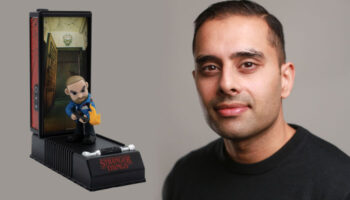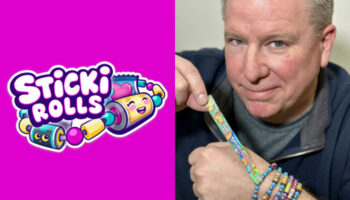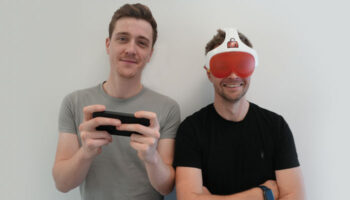Which body language should you never ignore in creative meetings? Deej Johnson discovers the answer…

Of all the body-language signals you might see in creative meetings, there’s one common gesture you should never ignore! And yet I’ve never seen anyone talk about it, write about it or draw attention to it in a creative session. What is it?! It’s someone who puts their hand over their mouth while another person is speaking. So… What does that gesture mean?
Google “Cover your mouth + body language” and you’ll get a range of possible explanations. These include nervousness, concealment, deceit, habit and halitosis. All well and good – although even AI is now helping to debunk the myth that mouth covering is a definite sign of dishonesty!
In fact, someone covering their mouth while another person speaks is a gesture I see a lot in creative meetings. Indeed, it’s the one gesture I never ignore. In my experience, it largely means one of two things…
First, it can mean that the person making the gesture is uncomfortable with something they’ve seen, heard or felt. Second, it can mean the person is processing a thought – and might be formulating a question. That being the case, I always do the same thing when I see a hand cover a mouth.

As soon as I can, I invite the person that makes the gesture to speak. How? There are a couple of ways to do it that bring out the best in people. More often than not, I will use the name of the person making the gesture, and ask: “…do you have a question?”
Intriguingly, the answer is usually no – but then they immediately follow this no with a question! They often say something like, “Not a question, no. I was just wondering…” and then they ask something. It’s a little odd because it’s as though you know they’re going to have a question before they do.
The beauty of this approach, though, is that if the person DOESN’T have a question, they can still volunteer their thoughts. When that happens, they tend to say something like: “A question? No! I was just thinking…” Then they reveal whatever’s on their mind. The same is true if they’ve had an idea.
All that said, there is a time when this approach doesn’t work so well. That’s when the person who put a hand over their mouth is somewhat introverted or self conscious. That being the case, I would still ask if they have a question… But if they say no during the meeting, I’d later take that person to one side and ask: “Was there anything else you gave thought to? I sensed you had a thought…”

If the answer is still no, invite the person to email you if they come up with anything. This takes the pressure off them to contribute in person. I’m particularly sensitive about doing this in a session that’s been set up as a ‘brainstorm’. That’s because I’m no fan of these meetings – not least of all because they’re very much an extrovert’s playground. You can read more about Bad Brainstorming here.
Finally, there’s one other thing to add… What happens if I see someone cover their OWN mouth while speaking? As I say, this is often believed to be a sign of deceit. However, there’s absolutely no scientific evidence to back that up! Instead, this gesture suggests that the speaker is uncertain about something they’re saying. Granted, someone might feel uncertain about what they’re saying because they’re being deceitful… But that’s not the only explanation.
Rather, it might also be that you see someone put their hand over their mouth as they talk when they’re pensive. They might be unsure about what they’re saying, tentative about it – or even embarrassed. They might also be reluctant to make a suggestion in public, or hesitant to offer feedback about what another person has said.
If any of this appears to be true, I would still address it. Wait for them to finish speaking… Then pause a little before saying something like, “Am I sensing some uncertainty about that?” This lets them explore their own thoughts without it seeming confrontational.
So! There you have it. You never know for sure when someone has something important on their mind… But this common body-language signal is a pretty reliable sign! Keep an eye out for it in every meetings – but especially creative ones.
–
To stay in the loop with the latest news, interviews and features from the world of toy and game design, sign up to our weekly newsletter here

























